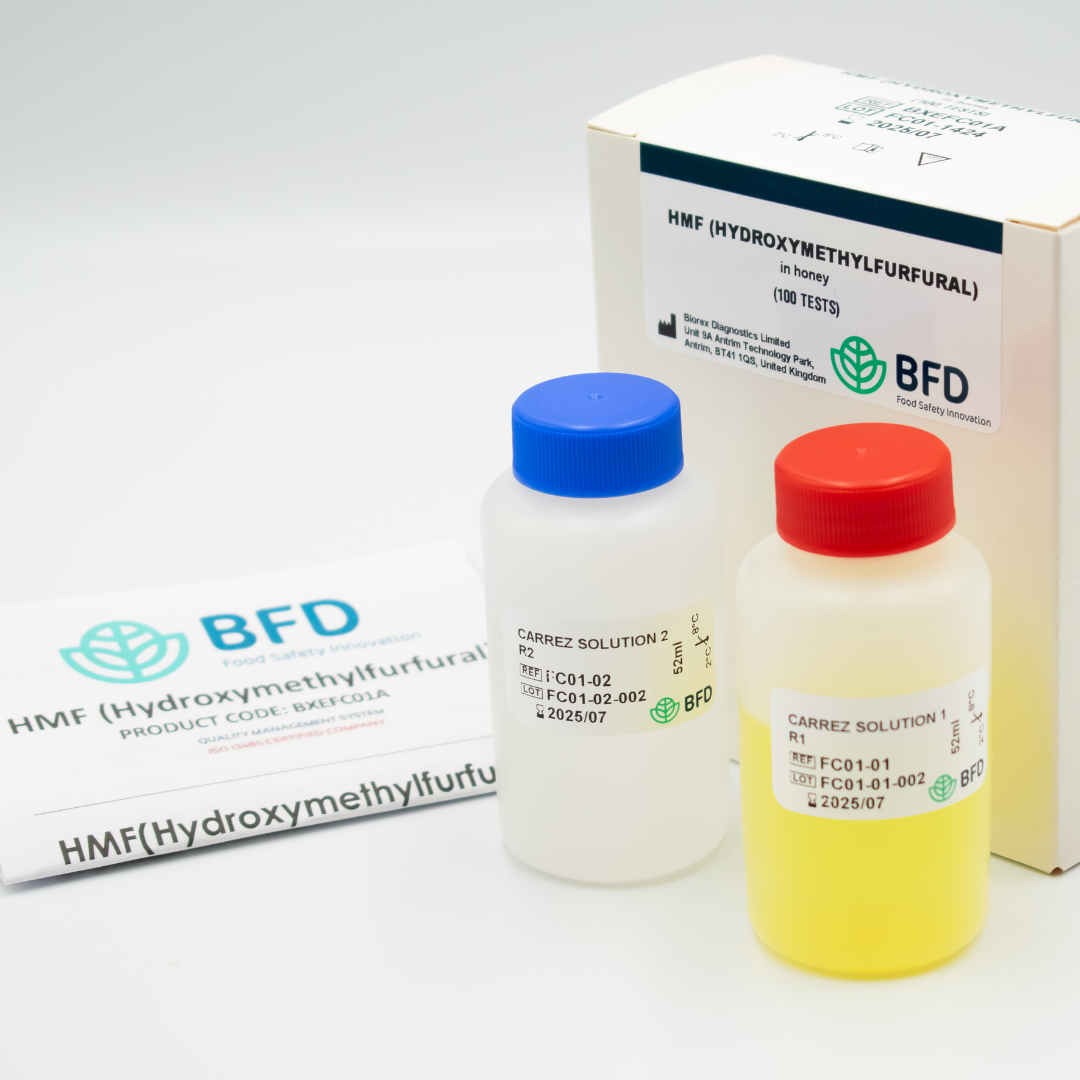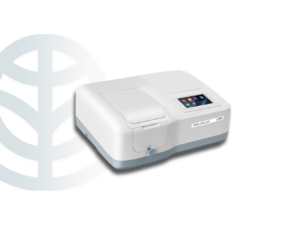Description
HMF Ordering Information
| Cat Code. | No. of Tests | Method | Sample Type | Limit of Detection (LoD) |
| BXEFCO1A | 100T | Colorimetric | Honey | 2mg/kg |
The European Union (EU Directive 110/2001) has fixed a HMF limit in honey of 40 mg/kg with the following exceptions: 80 mg/kg for honey coming from Countries or Regions with tropical temperatures, 15 mg/kg for honey with low enzymatic level (8-3 Schade Units).
The Hydroxymethylfurfural (HMF) Analysis from Biorex Food Diagnostics provides precise and reliable measurement of HMF, a key indicator of honey freshness, authenticity, and quality. HMF forms naturally over time or as a result of heat exposure, storage conditions, or adulteration with inverted sugar syrups, making it a critical parameter for assessing honey integrity.
This analysis enables laboratories and producers to verify honey freshness, detect adulteration, and ensure compliance with international standards such as Codex Alimentarius and EU Directive 2001/110/EC. The method is designed to deliver quantitative results that are reproducible and dependable, supporting both routine quality control and export certification processes.
The HMF Analysis provides insights into honey handling, processing, and storage practices, identifying heat-treated or aged batches while safeguarding against fraud or mislabelling. Its user-friendly protocol allows personnel with minimal technical training to perform tests efficiently and confidently.
Manufactured to high-quality standards, the HMF Analysis delivers accurate, reproducible, and traceable results, enabling laboratories and producers to maintain honey quality, protect consumer trust, and comply with regulatory limits for HMF content across domestic and international markets.








